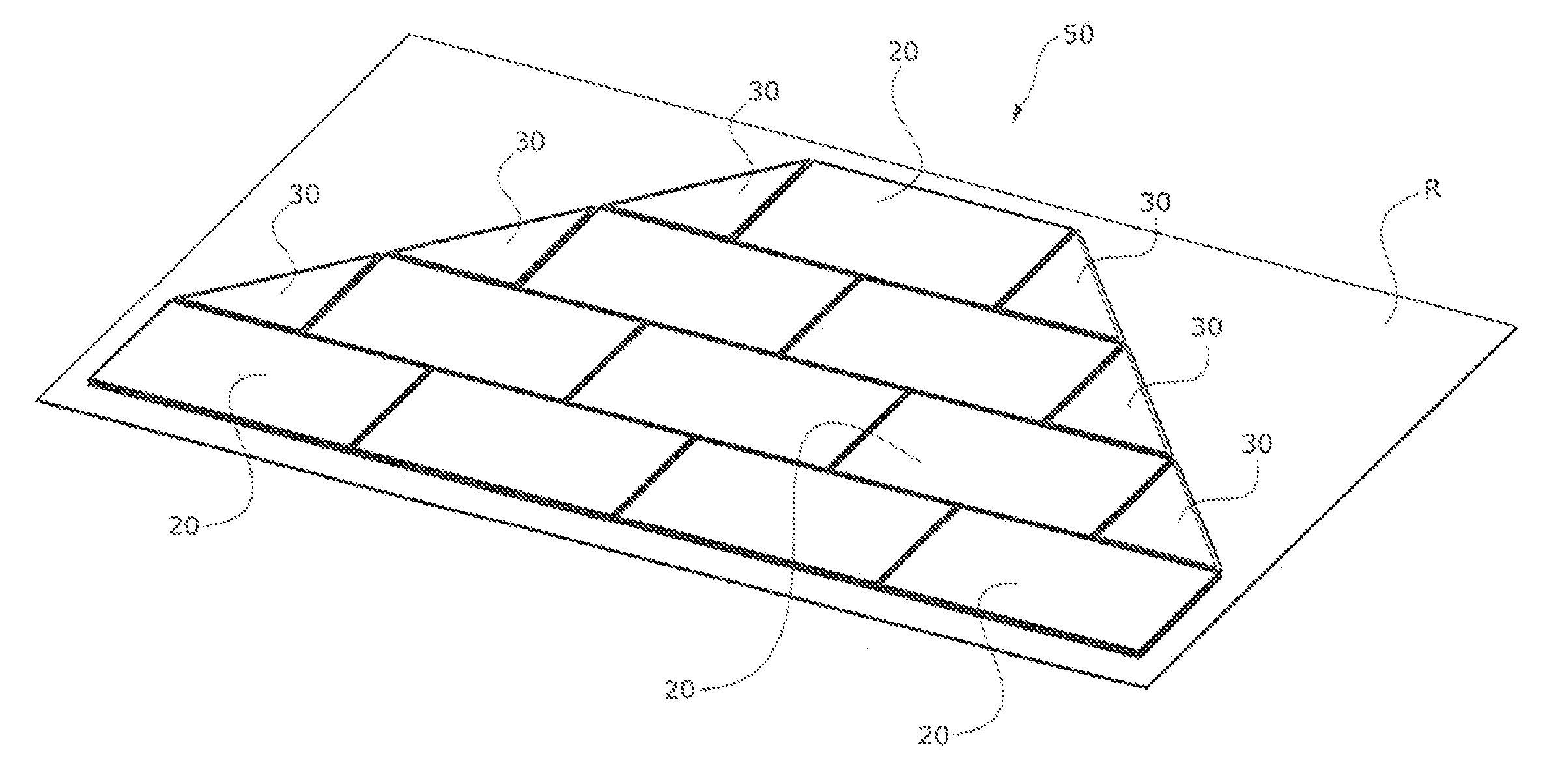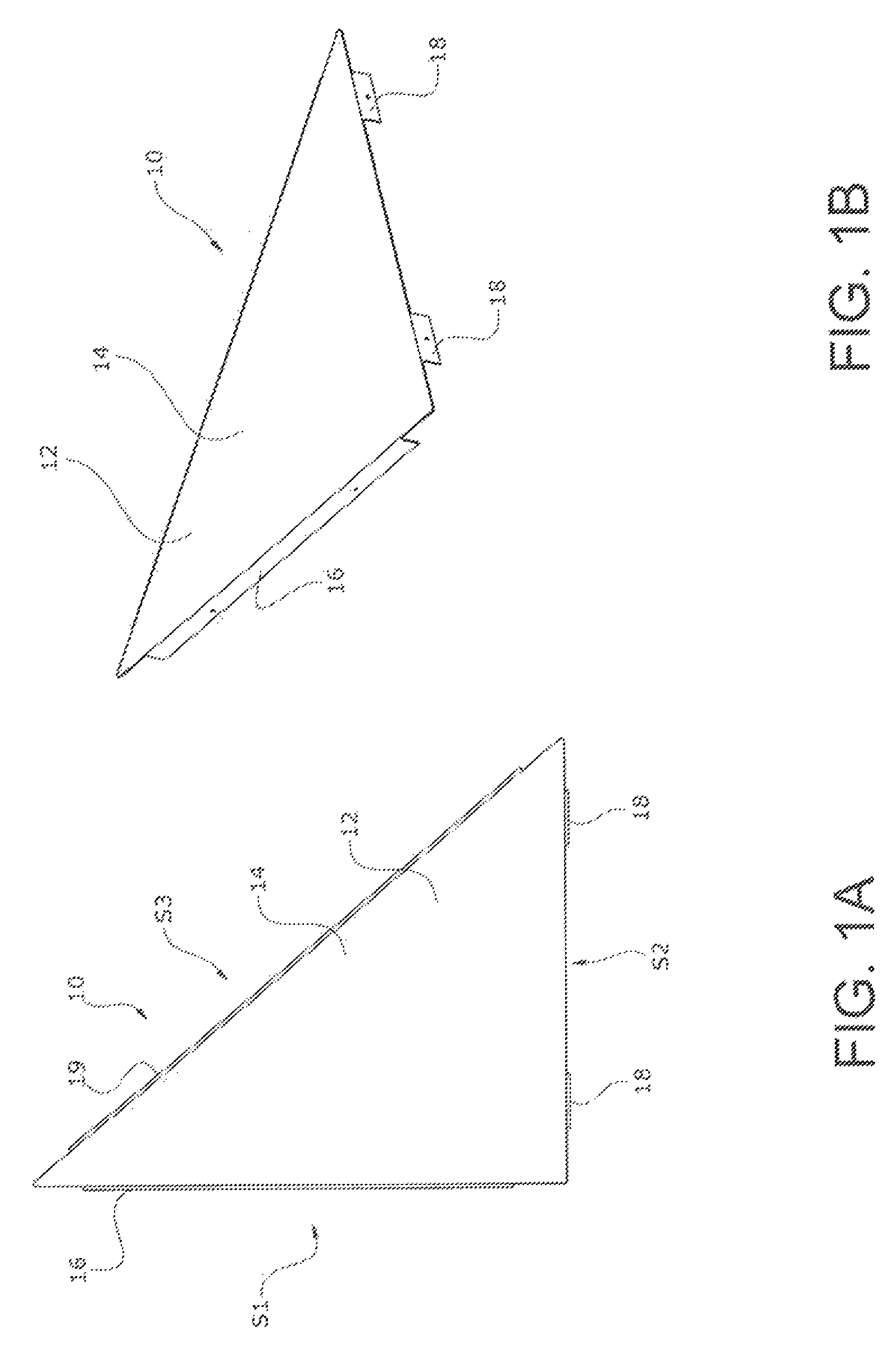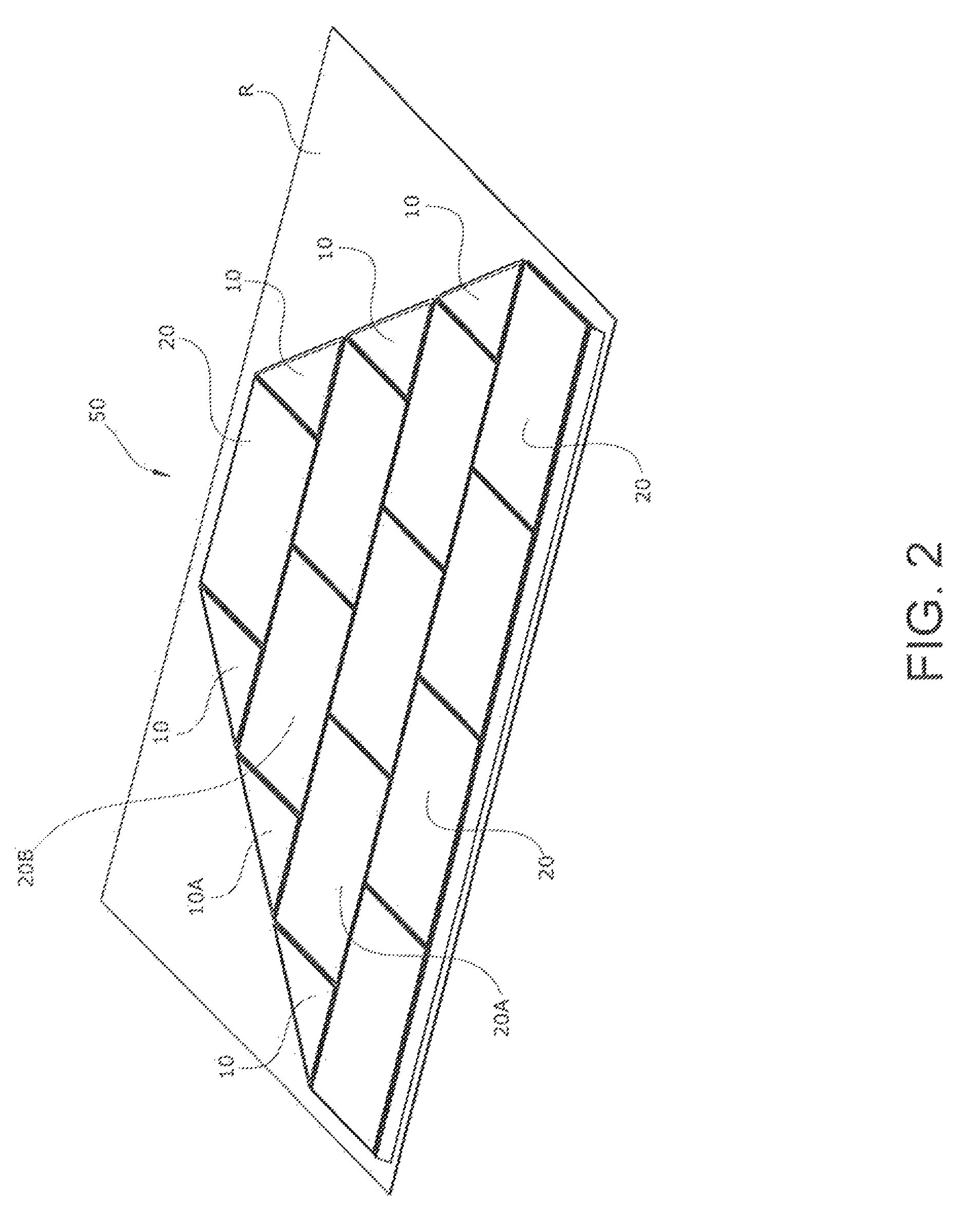Imitation solar module for use in a staggered or irregularly shaped solar array
- Summary
- Abstract
- Description
- Claims
- Application Information
AI Technical Summary
Benefits of technology
Problems solved by technology
Method used
Image
Examples
Example
DETAILED DESCRIPTION OF THE DRAWINGS
[0032]The present invention provides an imitation solar module that does not generate electricity itself. It is instead positioned within an array of standard electricity generating solar modules for both structural and aesthetic purposes. This imitation solar module may have a triangular or non-standard shape. A visual representation such as a decal (or other “picture” such as a printed image) of an actual solar module surface is displayed thereon. From an aesthetic point of view, the module has a surface that appears just like a functional solar module such that an observer on the ground will believe the present module generates its own electricity just like the surrounding modules. Simply put, the imitation module will look just like one of the electricity generating modules in the array. A passer by will not notice that the module in question is merely an imitation meant to look like the adjacent fully functioning modules.
[0033]The main body p...
PUM
 Login to View More
Login to View More Abstract
Description
Claims
Application Information
 Login to View More
Login to View More - R&D
- Intellectual Property
- Life Sciences
- Materials
- Tech Scout
- Unparalleled Data Quality
- Higher Quality Content
- 60% Fewer Hallucinations
Browse by: Latest US Patents, China's latest patents, Technical Efficacy Thesaurus, Application Domain, Technology Topic, Popular Technical Reports.
© 2025 PatSnap. All rights reserved.Legal|Privacy policy|Modern Slavery Act Transparency Statement|Sitemap|About US| Contact US: help@patsnap.com



